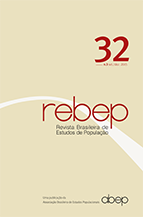Forecasting of mortality and hospital admissions from public healthcare attributable to air pollution in State of São Paulo between 2011 and 2030
Keywords:
Air pollution, Public health, São Paulo State, Particulate matterAbstract
National air quality standards in Brazil were established in the 1990s and are now outdated in relation to international patterns. This creates a challenge for effective control of air pollution levels and contributes to increasing mortality and hospital admissions rates. In order to quantify the impact of adverse health outcomes due to the concentration of particulate matter in São Paulo, this paper aims to project the number of deaths, hospitalizations and amounts spent on public hospital admissions from 2012 to 2030. It considers distinct scenarios of air pollution by fine particulate matter (PM2.5), using the year 2011 as baseline. The results show that if air pollution continues at the current levels, it will cause more than 246 thousand deaths from all causes between 2011 and 2030, as well as some 953 thousand hospital admissions and an estimated public health cost of R$ 1.6 billion due to hospitalizations. The magnitude of these results demonstrates the need to implement more rigorous measures to control air pollution and to encourage clean energy transportation, among other public actions, in order to reduce damage to the health of the population and to diminish government spending.
DOI http://dx.doi.org/10.1590/S0102-3098201500000029
Downloads
Downloads
Published
How to Cite
Issue
Section
License
Papers published in Rebep are original and protected under the Creative Commons attribution-type license (CC-BY). This license allows you to reuse publications in whole or in part for any purpose, free of charge, even for commercial purposes. Any person or institution can copy, distribute or reuse the content, as long as the author and the original source are properly mentioned.

